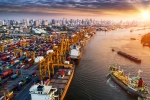Strategic spending and cutting-edge technologies are transforming the Kingdom's economic landscape.
First appeared on Consultancy ME
By Riyadh AlNajjar, Chairman of the Board and KSA Country Leader at PwC Middle East
As Saudi Arabia advances toward achieving the transformative goals outlined in Vision 2030, spending efficiency has become a key priority as the Kingdom continues to diversify an already resilient economy.
Under the leadership of His Highness, Crown Prince Mohammed bin Salman, the recently approved budget for the 2025 financial year emphasises waste reduction and the optimisation of public funds as it aims to drive sustainable growth in high-impact sectors, accelerating economic diversification and improving public services.
Earlier in July, the International Monetary Fund (IMF) had reviewed Saudi Arabia's economic performance and progress under Vision 2030 and commended the Kingdom's unprecedented economic transformation, noting strong domestic demand, robust non-oil growth, record-low unemployment and contained inflation. It noted that the recalibration of investment plans had enabled the government to reprioritise projects and align spending with sectoral strategies, ensuring resources are directed toward impactful and strategic initiatives under Vision 2030. However, further refinement in expenditure prioritisation can enhance the efficiency and effectiveness of resource allocation, maximising the impact of these initiatives.
Vision 2030: Pillar of efficiency
In the Kingdom, spending efficiency aims to reduce the Kingdom’s reliance on oil by developing and encouraging investment in non-oil industries1. This strategy has borne impressive results so far. Saudi Arabia is expected to witness the second-fastest GDP growth among major global economies in 2025, at 4.6%2. Non-oil activities reached an all-time high in 2024, contributing 52% of GDP.
Among non-oil industries, the trade and hospitality, transport and communications, and finance and business sectors have all seen robust growth in 2024, as revealed in our Saudi Economy Watch 2024.
In the Kingdom’s 2025 budget announcement, the Saudi Crown Prince reiterated the crucial role of the Public Investment Fund (PIF), the National Development Fund (NDF) and their subsidiaries in bolstering economic stability and fostering comprehensive development. Mega infrastructure projects in the Kingdom are increasingly focused on achieving greater efficiency in spending, while maximising the outcome of large capital projects in the country. Additionally, the government remains dedicated to maintaining sustainable public debt levels, substantial reserves and a flexible spending policy to manage global economic shifts.
With just over half a decade to 2030, the Kingdom is focusing on balancing ambitious investment targets with fiscal prudence. However, as highlighted at the recent Riyadh Spending Efficiency Forum, that does not necessarily mean reducing expenditure, but strategically redirecting resources for greater impact3. In keeping with this aim, the Expenditure Efficiency and Projects Authority (EXPRO) was established in 2017 and made into an authority in 2021 and since then it has made great strides in driving expenditure efficiency and effectiveness. Since the launch of Vision 2030, nearly nine years ago, spending efficiency initiatives have achieved financial gains 4
Tech-powered sectoral spending
Saudi Arabia’s 2025 budget will see the Kingdom continue to invest in the transformation of strategic sectors – including healthcare, tourism and logistics – under Vision 20305. Technologies such as artificial intelligence (AI) have emerged as key enablers in the transformation journey of these industries, with digitisation helping to streamline processes and increase operational and financial transparency.
Government bodies like the Saudi Data and Artificial Intelligence Authority (SDAIA) are accelerating AI innovation and adoption across government services through a strategic approach that blends state-of-the-art technology with local needs6.
In the healthcare sector, SDAIA has launched industry-specific centres of excellence and is working with the Ministry of Health to develop a national strategy for data and AI tailored to the sector’s needs7. This is part of the Kingdom’s wider US$50 billion investment into its healthcare sector, which includes digital health services aimed at improving efficiency, accessibility and transparency8.
Another key sector being enhanced by technology investment is tourism. Earlier this year, the Kingdom introduced the world’s first metaverse VR tours, bringing Saudi’s rich culture to a diverse global audience9.
Technological innovation is also driving efficiency and competitiveness in the Kingdom’s logistics industry. With the Kingdom’s key strategic location – and access to five billion people within an eight-hour flight – the implementation of cutting-edge technologies such as AI could unlock unprecedented growth in the logistics sector. China’s Tinjian Port offers a compelling example, with 5G, AI and cloud-controlled autonomous vehicles helping more than 20,000 employees to track, manage and move more than 20 million shipping containers a year at one of the ten largest ports in the world10.
Efficiency challenges – and opportunities
Of course, there are obstacles to unlocking spending efficiencies. Implementation of advanced tech like AI and data analytics often require substantial short-term investment. Spending on emerging technologies should be done as part of a long-term strategy, which needs the buy-in of all stakeholders – including employees, who may be resistant to change, or supply chain partners whose systems and processes may not yet be compatible.
Integrating advanced technologies into operations may also introduce long-term operational costs in areas such as cybersecurity, which could consume a larger share of IT budgets – though such investments offer plenty of upsides.
Spending on the latest technologies, however, isn’t enough. Improvements in government project selection, appraisal and feasibility will help improve public investment efficiency overall in the region. A unified public investment management framework is also critical to ensure maximum impact of public investments in the GCC and achieve long-term development objectives. Such frameworks can enable fiscal stability by improving budget credibility, supporting economic diversification and advancing sustainability goals by integrating environmental controls into public investments.
We also need to have the right talent in place to effectively leverage these tools. This need for talent and technological expertise has fuelled substantial growth in the Kingdom’s managed services space, with organisations partnering with specialised providers to reduce costs, enhance operational efficiency and drive innovation.
I am confident that by harnessing the full potential of technology and optimising our resources – we will be able to build an even more resilient, dynamic Saudi Arabia.







